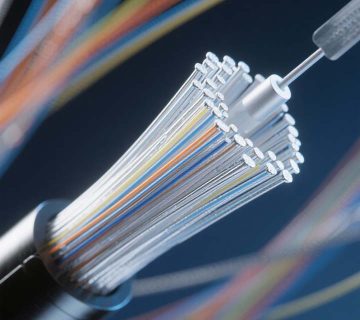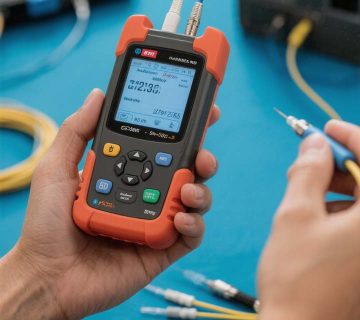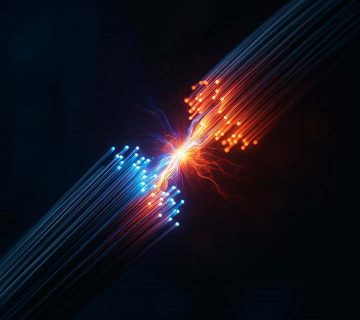A fiber optic patch cord (also known as a fiber jumper or fiber patch cable) is a short length of optical fiber cable that has connectors at both ends. These cords are used to connect two devices within a network, such as switches, routers, patch panels, and transceivers. Because they transmit data through pulses of light instead of electrical signals, fiber patch cords provide faster speeds, greater bandwidth, and longer transmission distances compared to traditional copper cables.
Fiber optic patch cords play a critical role in building reliable and high-performance networks. Without them, even the most advanced fiber systems cannot function properly.
Table of Contents
?How Does a Fiber Optic Patch Cord Work
The principle behind a fiber patch cord is simple: light signals travel through the optical fiber core, carrying information at the speed of light. Connectors at both ends ensure a secure, low-loss connection between network devices. The quality of the connectors and the type of polishing determine the overall performance of the patch cord.
Read More: Single Mode vs Multi Mode Fiber Optic Cable: A Complete Guide
Types of Fiber Optic Patch Cords
To meet different networking needs, fiber optic patch cords come in various categories:
By Fiber Type
Single-mode (SMF):
With a small core diameter (around 9µm), single-mode fibers support long-distance transmission, sometimes up to 80–100 km when paired with advanced optics. They are commonly used in telecom backbones and metropolitan area networks.
Multi-mode (MMF):
With larger cores (50µm or 62.5µm), multi-mode fibers are best for shorter distances, typically within 500 meters. They are widely used in data centers, campuses, and enterprise networks.
By Connector Type
LC (Lucent Connector): Compact, widely used in modern data centers.
SC (Subscriber Connector): Square-shaped, common in telecom applications.
ST (Straight Tip): Bayonet-style connector, mostly used in legacy networks.
FC (Ferrule Connector): Threaded design, offering secure connections.
MPO/MTP: High-density connectors for parallel optics, often used in 40G/100G environments.
By Polishing Type
UPC (Ultra Physical Contact): Low insertion loss, suitable for most networks.
APC (Angled Physical Contact): Angled end-face, minimizing return loss, ideal for high-precision systems such as FTTH and optical TV.

Common Uses of Fiber Optic Patch Cords
Data Centers: Connecting servers, switches, and storage arrays.
Telecommunication Networks: Linking core, metro, and access networks.
FTTH (Fiber to the Home): Delivering high-speed internet to residential users.
Testing and Laboratory Applications: Used with test equipment to verify optical performance.
Enterprise LAN and WAN: Ensuring reliable and scalable connectivity in corporate environments.
Advantages of Fiber Optic Patch Cords
High Speed: Supports gigabit and even terabit-level data transmission.
Low Signal Loss: Maintains integrity over long distances.
EMI Resistance: Immune to electromagnetic interference, unlike copper cables.
Compact Size: Thinner and lighter than copper, saving space in data centers.
Future-Proof Technology: Compatible with next-generation high-bandwidth networks.

Choosing the Right Fiber Optic Patch Cord
When selecting a patch cord, consider:
Distance requirements: Single-mode for long-haul, multi-mode for short-range.
Connector compatibility: Match with the devices and panels you are using.
Performance needs: UPC vs. APC depending on the application.
Cable jacket type: PVC, LSZH (Low Smoke Zero Halogen), or armored for specific environments.
Conclusion
Fiber optic patch cords may seem like a small part of the overall network, but they are essential for enabling stable, high-performance connectivity. With different types, connectors, and polishing options available, choosing the right patch cord ensures that your network runs efficiently and reliably.
At ParsAndishanProshat, we provide premium-quality fiber optic patch cords and comprehensive networking solutions designed to meet the demands of modern enterprises, ISPs, and data centers. Contact our team today to discuss your requirements and discover the right products for your business.





بدون دیدگاه